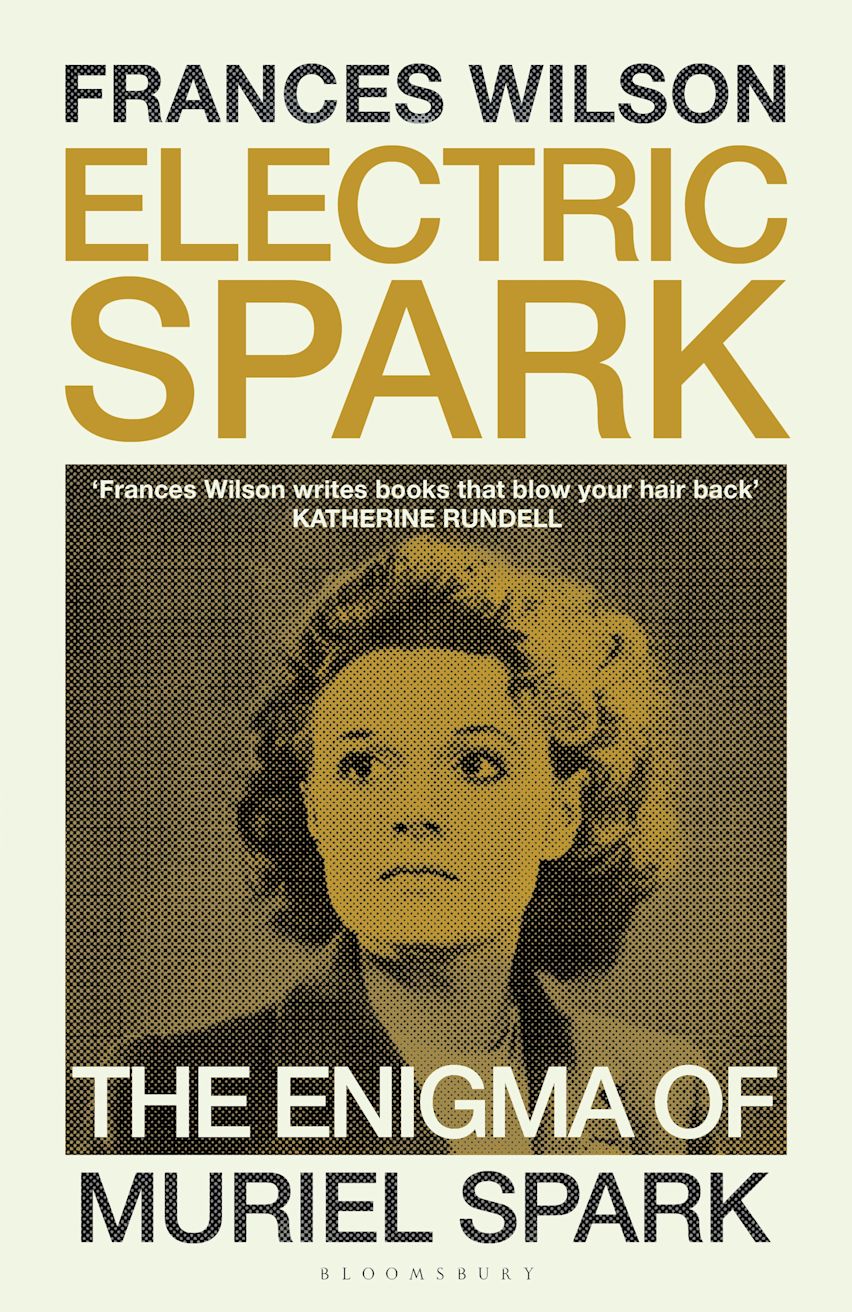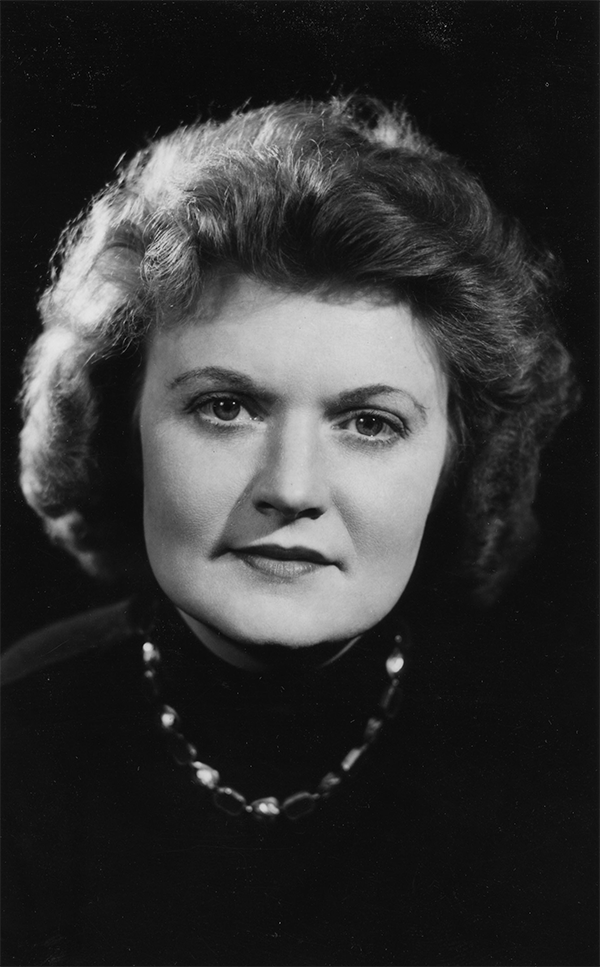
- Free Article: No
- Contents Category: Literary Lives
- Review Article: Yes
- Article Title: Cells in a honeycomb
- Article Subtitle: The tempestuous life of Muriel Spark
- Online Only: No
- Custom Highlight Text:
Some literary biographies are best known for their gestation – or malgestation. Some authors, we might go further, should have a big sign around their neck – noli me tangere. Muriel Spark is one of them. Her voluminous archive, lovingly tended all her life, is full of booby traps. Twice she went into battle with biographers: first Derek Stanford, a former lover; then Martin Stannard, whose biography of Evelyn Waugh she had admired.
- Book 1 Title: Electric Spark
- Book 1 Subtitle: The enigma of Muriel Spark
- Book 1 Biblio: Bloomsbury, $44.99 hb, 419 pp
- Book 1 Cover Small (400 x 600):

- Book 1 Cover (800 x 1200):

- Book 1 Readings Link: https://www.readings.com.au/product/9781526663030/electric-spark--frances-wilson--2025--9781526663030#rac:jokjjzr6ly9m
Muriel Camberg was born in Edinburgh, in 1918. Her Jewish father, Barney, worked in a tyre factory; her English mother, Cissy, suffered from depression and drank a bottle of Madeira each day (her ‘tonic’). Muriel grew up conscious of her Jewishness and of rising anti-Semitism. Later, she described herself as a ‘Catholic animal’ and a ‘Gentile Jewess’. She would convert to Catholicism in her mid-thirties, but she was never a conventional Catholic. She believed in abortion, contraception, and divorce; she loathed Pope John Paul II, and she always arrived late for the Eucharist to skip the preaching (‘I regard it as a mortal sin to listen to sermons’). Nothing was ever usual about Muriel.
The Cambergs lived in a tiny flat. Between the ages of eight and fifteen, Muriel slept on the kitchen sofa. How well she knew flats; how well she evoked them in her claustrophobic and garrulous novels. Her best fiction is full of eccentrics living in flats and share-houses. In A Far Cry from Kensington (1988), Mrs Hawkins tells of the gas-rings, the ‘rumpus in the garden’ when the neighbours row, and the last pull of the lavatory chain at night (‘That’s Basil’).
Predictably perhaps, Muriel fled as soon as she could. Aged eighteen, she met Sydney Oswald Spark, Lithuanian-born, thirteen years her senior, a lapsed Jew who taught mathematics. Impulsively she followed ‘Ossie’ to Southern Rhodesia and married him a year later, not realising that he was paranoid. Their physical relationship ended when she gave birth to a son, Sonny. Ossie’s mania worsened; Stannard claims he shot Spark in the leg. She fled, placing Sonny in a convent school where, precociously, he changed his name to Robin at the age of five.
Frances Wilson describes Spark’s brief marriage as the most mysterious part of her life. What was Spark up to in Rhodesia? Reinventing herself perhaps, always embellishing the facts. In Cape Town she befriended Princess Marie Bonaparte, the so-called French queen of psychoanalysis, a champion of the female orgasm and guardian to the young Prince Philip of Greece during his nomadic years. Spark would be much influenced by Bonaparte’s 1949 book on Edgar Allan Poe and by the possibilities of psycho-analytic ‘biographical-literary criticism’.
Divorce proceedings began in 1939, but were not finalised until 1943. To Spark’s surprise, Ossie was awarded custody of Robin. When Spark left the colony that year, neither Ossie nor Robin knew she was planning to depart. Ossie, in and out of institutions, resettled in Edinburgh. Robin lived with the Cambergs and stayed in the same house all his life. He seems to have been warily devoted to his mother, who refused to revisit Edinburgh, not even for Robin’s wedding. Tellingly, Mrs Hawkins in A Far Cry says, ‘the idea of giving away a baby was too sad to be contemplated’.
Only much later in life would Robin feud publicly with his mother. In 1998, he accused her of denying her Jewishness. Spark’s furious response was characteristic. In a newspaper interview, she accused Robin of envying her success: ‘He can’t sell his lousy paintings … He’s never done anything for me except for being one big bore.’ She changed her will, excising her son.
Back in London, the young divorcée held many secretarial jobs and lived in tiny flats. These were years of poverty (in 1951 she earned £31). There was a brief stint as general secretary of the Poetry Society and editor of its Poetry Review, a magazine proud of its Victorian and Georgian tastes. Spark was expected to uphold them, and to sleep with every man associated with the Poetry Society. ‘Cannot we cease railing at the moderns?’ she enquired in her first editorial. Thus she alienated the elders, including Dr Marie Stopes, poet and proponent of birth control.
Romantically, Wilson, suggests, ‘Muriel was a magnet for mediocrities’. The most persistent lover was Derek Stanford: bisexual, neurotic, and not much taller than the diminutive Spark. Wilson considers this the happiest of her relationships, and she seems to have contemplated marriage. The pair collaborated on several literary projects while Spark wrote lives of Mary Shelley and John Masefield. When Spark finally published her first novel in 1957 (The Comforters), her reliance on Stanford was over. He wrote a treacherous review of The Comforters and went on reviewing subsequent books by Spark. In 1962, he sold their love letters to an American bookseller, who invited her to buy them back. Blackmail repeats throughout Spark’s fiction. ‘Everything’s blackmail,’ says Pierre in the brilliant The Hothouse by the East River (1973). Wilson goes even further: ‘For Muriel, civilisation itself was a blackmail plot.’
Stanford’s personal vendetta culminated in four chapters about Spark in his memoirs, Inside the Forties (1977). Outraged, Spark avenged herself in A Far Cry, perhaps her finest book, wickedly funny about publishing. The odious Hector Bartlett is a caricature of Stanford. Thirty-seven times no less he is reviled as the pisseur de copie – the literary hack, the pisser of copy. Wilson writes: ‘Weak men are dangerous and Spark rarely, in her novels, described a man who wasn’t weak.’
With the publication of her sixth novel, The Prime of Miss Jean Brodie (1961), Spark became internationally famous and moved to New York; William Shawn installed her in an office at The New Yorker, which had published Jean Brodie in a single issue. In 1966 she moved to Rome where she lived in a palazzo apartment so enormous she said she couldn’t see the ceiling. Every couple of years there was a new novel, usually short. Wilson regards them as ‘volumes in a novel sequence, or cells in a honeycomb’.
Marianne Moore said that the writer must have ‘the courage of his peculiarities’. Perhaps the poet was thinking of Muriel Spark. Peculiar the Scottish writer indefatigably was. Evelyn Waugh regarded her as a saint; Shirley Hazzard remembered ‘Muriel with the X-ray eyes’; Bernard Levin felt that had she been born earlier she would have been burnt as a witch. Spark herself claimed to have ‘an access to knowledge that I couldn’t possibly have gained through normal channels’.
Spark’s world is full of gossips, rogues, spies, and black magicians. Few female novelists since Jane Austen have deprecated so many of their female characters. Mrs Hogg in The Comforters – based on Spark’s braless nemesis, Dr Marie Stopes – has ‘sought in vain for an effectual garment to harness her tremendous and increasing bosom … it was like damming the sea’. At times the prose borders on the surreal. Nicholas Farringdon in Girls of Slender Means (1963) wants Selina to be ‘an ideal society personified amongst her bones’.
The work, for a major novelist, is strikingly uneven. There are certain things that Spark cannot do, or won’t. She hardly ever writes about family, and there are no mother-daughter bonds. At times, wilfully, she startles with her phrasing (‘I was very dripping wet’). She is not interested in settings and she struggles with décor. Physical descriptions are meagre, impressionistic. Compare her, say, with that other great original of postwar British fiction, Iris Murdoch, who conveys more about a character’s psychology and past in a few pages than Spark does in an entire book.
 Muriel Spark (Pictorial Press/Alamy)
Muriel Spark (Pictorial Press/Alamy)
Spark may not be a good noticer, but she is an acute listener, always registering the whimsicalness and non sequiturs of conversation. The humour is black, with a touch of Gertrude Stein (‘It is a good thing to go to Paris for a few days if you have had a lot of trouble, and that was my advice to everyone except Parisians’). Most original of all was the fact that time ceases to be chronological. Spark moved not in Einstein’s ‘space-time’ but in a dimension she called ‘time-space’. Hence her free use of analepsis and prolepsis. Frank Kermode, a great aficionado, spoke of ‘Sparkian time-shifts’. These are frequently deployed in Spark’s weirdest novel, The Driver’s Seat (1970), in which Lise travels south looking for the man who will murder her. Although Spark said that she frightened herself writing The Driver’s Seat (‘I had to go into hospital to finish it’), it was her favourite of the novels. (The film stars Elizabeth Taylor as Lise and – wait for it – Andy Warhol as an English lord.)
Throughout Spark’s fiction, life is squalid, lonely, contingent. Kermode wrote: ‘Sometimes it appears that for Dame Muriel one of the prime duties of the artist is to clear away as much as possible of the monstrous accumulation of stupidity in our world.’ Outbreaks of humanity are rare, though there is a luminous passage in A Far Cry when Mrs Hawkins introduces her lover to the nursery rhymes and fairy stories of which he was deprived during ‘an infancy of slums and smelly drains, rats and pawnshops, street prostitutes, curses, rags and hacking coughs’.
In 1992 Spark published her autobiography: the dourly titled Curriculum Vitae. Like Wilson’s book, it ends with the publication of The Comforters. This is a most cheerless memoir – surly, defensive, surprisingly humourless. (There is a transcendentally boring section on how to make a pot of tea.) Spark was warring with Derek Standford at the time, and the book was ‘her own piece of poetic paranoia’, as Wilson puts it. ‘Why does the book read as though written with a gun to her head?’ Mercifully, Spark eschewed autobiography after that, content to suffuse the fiction – and the admirable poetry – with her own remorseless sensibility.
Wilson’s book is very different: fluent, personable, alert to her subject’s eccentricities, and often witty. Of Howard Sergeant’s poetry she says ‘it never went out of fashion because it never was in fashion’. At times, Wilson startles with her pronouncements. Mary Shelley’s Frankenstein, she tells us, has ‘displaced Adam and Eve as our central creation myth’. Then she describes Spark as ‘the loneliest and most singular figure on the twentieth-century literary landscape’, which may surprise devotees of Franz Kafka.
And what, in the end, mattered to Spark – after the ruptures, the vitriol, the obliterations? In 1973 she moved into the house that her secretary and companion Penelope Jardine was restoring in Oliveto, near Arezzo. So inseparable were the two women that cruising interviewers panted about lesbianism. Then, in 1992, soon after Spark had enlisted Martin Stannard to write her biography, her health collapsed when a hip replacement went terribly wrong. Seven more operations were necessary. The list of subsequent afflictions is distressing. Wilson writes: ‘For her last fourteen years, while she tried to derail the biography she had commissioned, Muriel was in constant and acute pain. It was as if … someone had the evil eye.’
Spark died in 2006, aged eighty-eight. It was poetry that had always stirred her, long before fiction. It is threaded through the novels, especially The Girls of Slender Means via Joanne, ‘the proclaiming statue’. Spark’s simple tombstone bears the legend ‘MURIEL SPARK / POETA’.


Comments powered by CComment